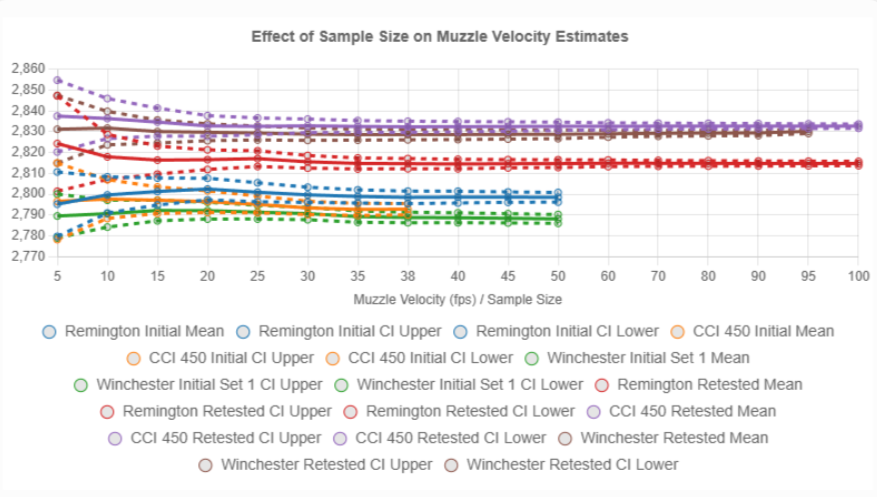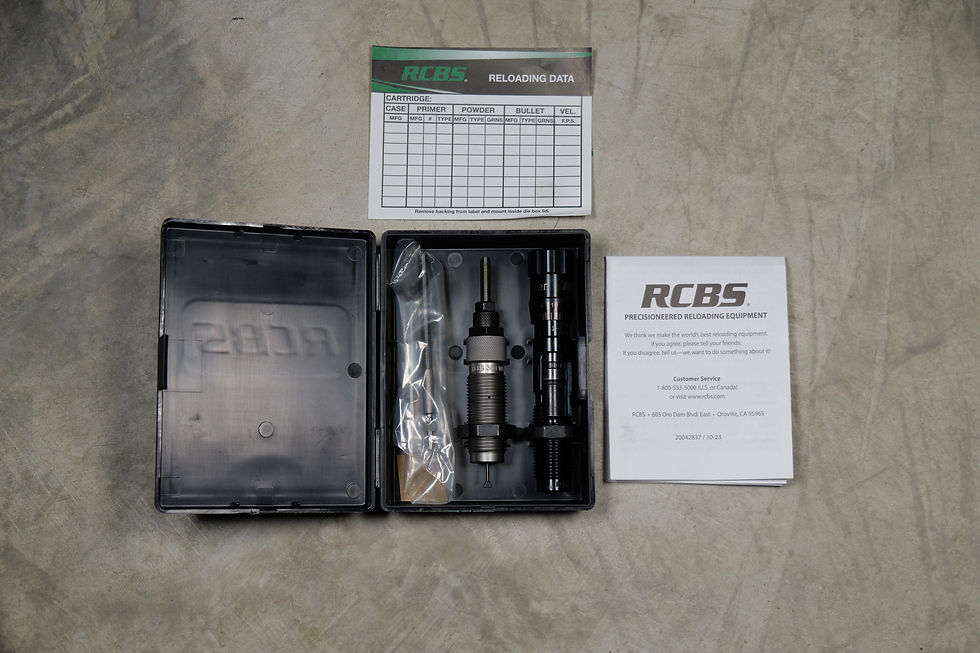Do Primers Affect Consistency?
- Reloading_allday

- Aug 19
- 4 min read
A look into shooting 1000 rounds with different types of primers and .223 Remington to see if there is an average velocity or standard deviation difference.

Do Primers Affect Consistency?
Generally, we see many claims surrounding primers and their influence on performance with small arms ammunition. Does the type of primer matter? The brand? Besides the obvious of the primer there to ignite the propellant, what is going on in the internal ballistics side of primers? We will discuss how primers work, their effect on standard deviation, muzzle velocity, and the importance of sample size.
How Primers Work
The main function of a primer is to give the "proper" pressure, as propellant requires pressure to burn. The primer raises the ambient air temperature inside the case that aides in ignition. Further, it provides hot particles, being lead, other heavy metals, particulates, that come from the primer and work it's way through the flash hole, up through the interstitial airspace between propellant granules. As a result, as one hot particle ignites, it ignites another hot particle.
When the propellant starts to burn in an enclosed environment, the more gas it generates which increases pressure. The propellant then reacts with higher pressure and accelerates gas production. In other words, more gas, more pressure when restricted behind the bullet.
The moral of the story is that propellants require pressure to burn. When this process starts in an enclosed environment, it produces gas, and the more gas it produces, the more pressure it results in. Primers raise the ambient air temperature inside the case, aiding in the ignition of the propellant.
Testing Setup
For the testing, this is solely looking at average velocity and standard deviation. This was conducted with an in-house rifle, specifically a 24" AR15 utilizing a 77 Grain Sierra MatchKing and a Vihtavuori N135. We have been addressing the common issues among the gas gun platform and .223 Remington lately. As a result, we wanted to test primers to isolate what may be happening. Of course, if you want to take a look at some of the 100-shot groups we did with an AR15 and reading about sample size, check out our socials and other articles on the website.

Regardless, we specifically tested multiple primers: Remington SRP, CCI450, Winchester SRP, CCI BR4's, CCI 400's, and CCI41's. The testing initially included 50 rounds per primer type, but we quickly discovered an interesting issue that we will get to later. As a result, some new lots of primers were purchased, and the sample size was increased to 100 rounds per primer type, effectively making this one of the largest public primer studies to date. Without further adieu, let's get into it.
Do Primers Matter for Standard Deviation?

Looking at the velocity SD, we find that there is no statistical difference using pairwise F-test with this particular optimized .223 Rem load out of a gasser.
One thing to note is the older BR4 & Remington lot, which initially was used with 50 shots, yielded some odd velocities. The new lot of BR4 was purchased and fell in line with the rest of the data. More research will be done to find out why these older lots initially did not perform.
This also highlights why re-testing and using an adequate sample size are important. Otherwise, false conclusions may be found.
Do Primers Matter for Average Velocity?

Looking at the average velocity difference, there is statistical significance across the primers. Running a one-way ANOVA, then reconfirming with a post-hoc, pairwise t-test on the retested samples:
Group 1 (Higher Means): CCI 450 (2832.76 fps), BR4 (2832.49 fps), Winchester (2830.67 fps)—not significantly different from each other (p > 0.05).
Group 2 (Lower Means): CCI 400 (2818.51 fps), Remington (2815.05 fps), CCI 41 (2813.10 fps)—not significantly different from each other (p > 0.05).
Between Groups: Group 1 significantly higher than Group 2 (p < 0.001 for all pairs, e.g., CCI 450 vs. Remington: t ≈ 7.45, p < 0.001).
Why Sample Size Matters

As highlighted over the years, with higher samples one gains more visibility on whether or not something is different. Initially, with 5-10 shots, there is much variance, unlike when raising to 50+ rounds. With the first BR4 & Remington lot in question, with the higher SD than the rest of the data, one could have concluded there was a difference. When retested, we see that there is not with a much higher sample size.
Conclusion
As we continue to explore some of the inherent issues with the gas gun platform and .223 specifically, this test was conducted with this cartridge, projectile, and propellant fired on multiple days. Initial and retested had a 10-degree difference (85-95F) measured with a Kestrel 5700.
What is not known is what this combination will do in extreme cold or hot conditions, and it may change. Other combinations with large charges of slow-burning powder, or extreme cold conditions, have been reported to show differences in performance.
Here, we are specifically addressing the .223 Remington, in this platform to diagnose why it is inherently “finicky” when optimizing the load to its full capability (progressive burn, high case fill, burnout before projectile exit, and good components).
While SD’s were not statistically different across multiple primers, the average velocity was in this case.
We will continue exploring the inherent issues and report back with more, as we have many tests to share.
About the Author





Comments